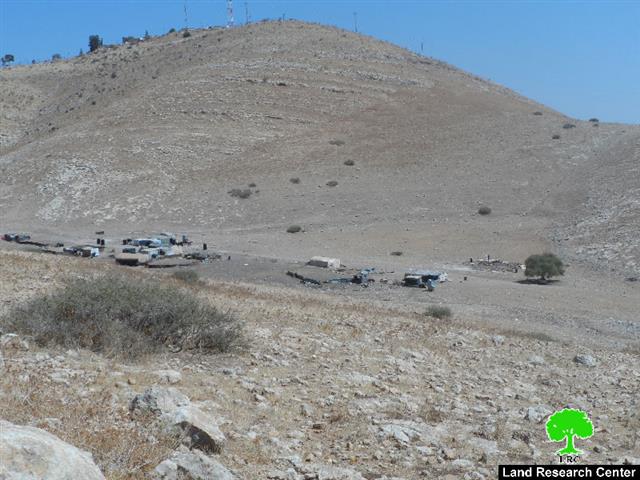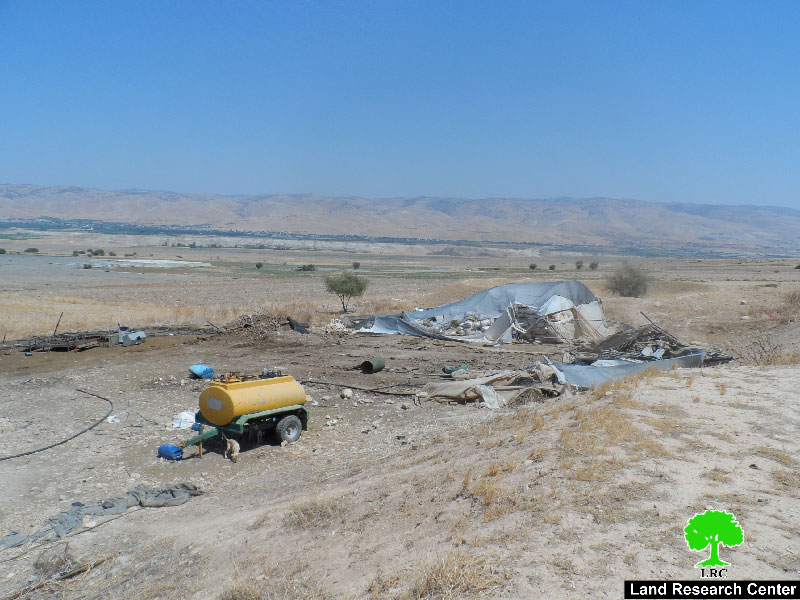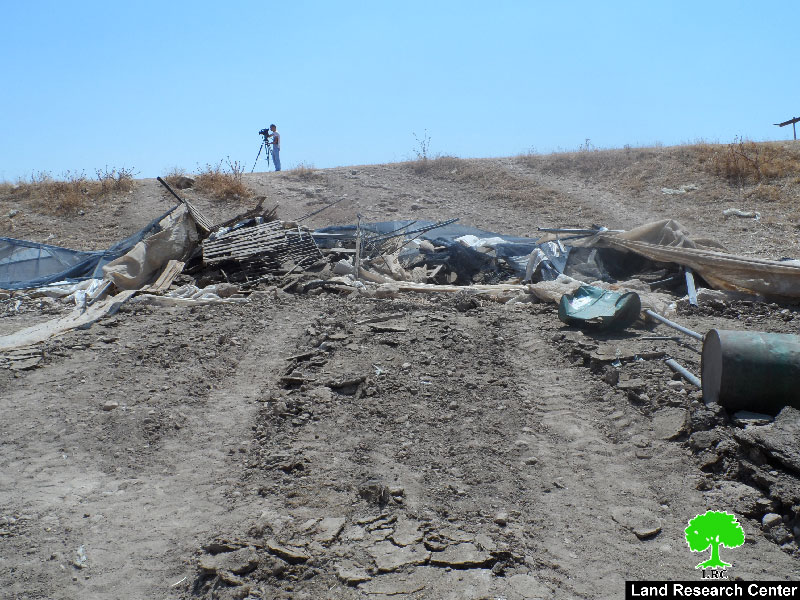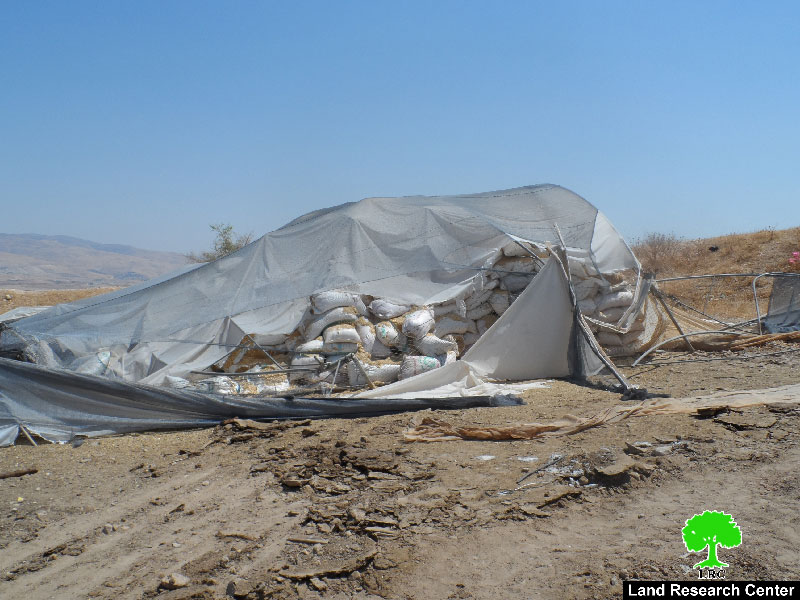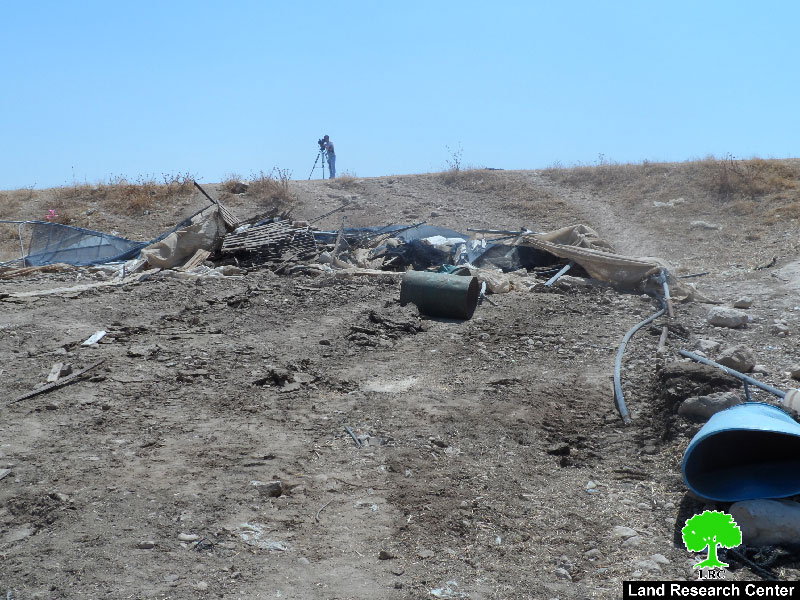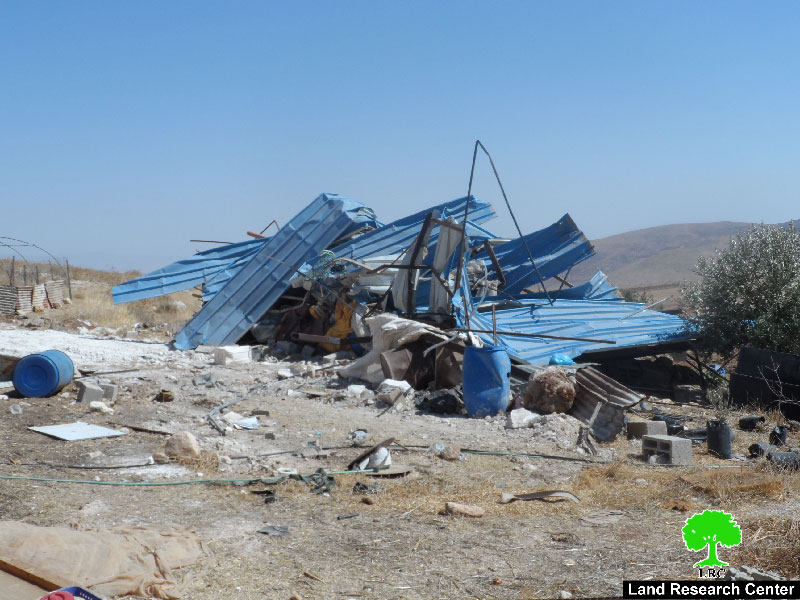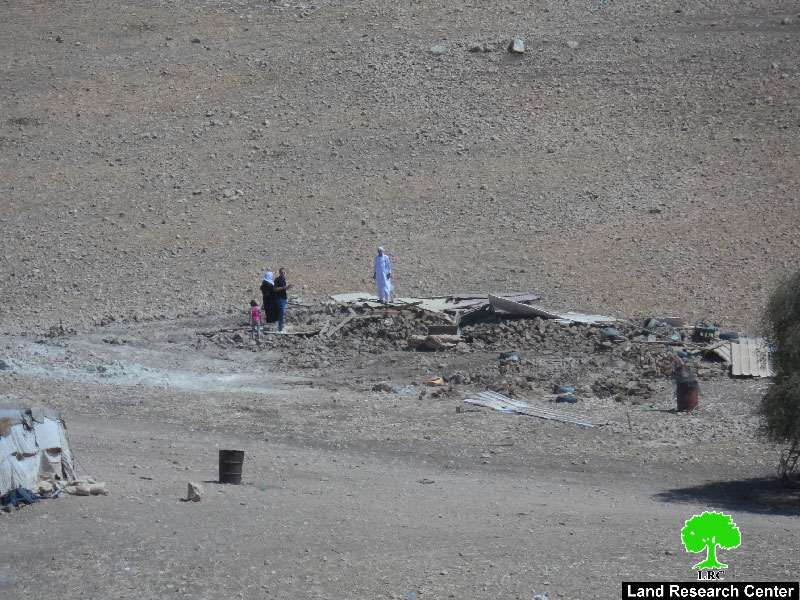Violation: demolition of tents and barracks
Location: Northern of Al-Ghoor- Tubas
Date: August 20, 2015
Perpetrators: the Israeli occupation army
Victims: number of Bedouin families
Details:
A massive force from the Israeli occupation army accompanied by two military dozers raided Al-Deir hamlet, east of the adjacent to the Jordanian-Palestinian borders village of Ein Al-Beida and embarked on demolishing a number tents and barracks belonging to the family of citizen Alaa’ Mutawi’. The demolition was carried out under the claim of unlicensed construction within area classified “C” according to Oslo Accords.
It should be marked that the affected people have previously received stop-work orders on their agricultural structures by the Planning and Construction Committee- Israel Civil Administration in 2013. Residents immediately embarked on licensing their structures in coordination with the legal department at Tubas Governorate; the process was met by stalling and delays by the Israeli side until the occupation’s army came and demolished the structures.
The following table shows information about the damage resulted due to the latest demolition:
|
Affected citizen |
Family |
Minors |
No. of sheep |
Nature of notified structure |
||
|
Residence |
Barrack for sheep |
Other |
||||
|
Alaa’ Mutawi’ |
8 |
3 |
120 |
Residential tent (40m2) |
Sheep tent(60m2) + sheep barn (150m2) |
Fodder storehouse (100m2)+ mobile bathroom+ metallic construction materials |
Source: Field observation- Department of Monitoring Israeli Violations- Land Research Center-2015
Photos 1-6: the targeted structures of demolition
The lands of Khirbet al-Deir are classified as "taboo" or listed in the Ottoman land registry; despite that residents have ownership documents for their lands, yet the occupation insists on displacing them.
Residents of the area (58) come originally from Tubas and Tammun villages in the nearby. Life is characterized as primitive where houses and barns take the shape of tents; agricultural and animal husbandry is people's only source of income there.
Einun hamlet: an Israeli target of demolition:
4 km east of Tubas, Einun hamlet is founded. The Israeli occupation army carried out a demolition at 5:00 in the morning, which reached out a residential tent and an agricultural barrack under the claim of unlicensed construction. Noteworthy, the demolished structures were notified with stop-work in 2013.
Despite that the notified completed all licensing procedures, the Israeli occupation authorities kept on in its displacement plan, which aims at emptying the area of Al-Ghoor from its indigenous people and legitimate owners.
The following table shows information about the damage resulted due to the latest demolition:
|
Affected citizen |
Family |
Minors |
Nature of notified structure |
||
|
Residence |
Barrack |
Other |
|||
|
Ra’fat Amer |
9 |
3 |
Residential tent (60m2) |
Barrack (72m2) |
|
|
Mostafa Daraghmeh |
4 |
2 |
Room (40m2) |
|
Kitchen+ bathroom+ a water tank (1/5m3) |
|
Total |
13 |
5 |
2 residences |
1 barrack |
3 others |
Source: Field observation- Department of Monitoring Israeli Violations- Land Research Center-2105
Photos 7-8: the targeted structures in Einun hamlet
It should be marked that Einun hamlet is a hotspot for Israeli targeting and violations; most of the agricultural and residential structures of the area are either notified with stop-work or demolition. The area is known for providing job opportunities for agricultural families from Tubas.
Demolition of the kindergarten of Samra hamlet:
The hamlet of Samra, northeast Wad Al-Malih area witnessed a new arson attack represented in demolishing the hamlet’s kindergarten (24m2) at time of the new schools year.
The two room kindergarten was built by international activists for the sake of creating an educational environment for the hamlet’s kids. Noteworthy, the 170 member of this community live a primitive life lacking water, electricity and infrastructure.
It should be marked that the hamlet is surrounded by two military camps for the Israeli occupation army; the area has been declared as a closed military zone in an attempt to empty it from the indigenous inhabitants.
Photo 9: the targeted kindergarten
Land Research Center LRC sees that demolitions contradict with all of the International conventions and Humanitarian laws including:
- Article 17 of the (1948) Universal Declaration of Human Rights stating: “Everyone has the right to own property alone as well as in association with others. No one shall be arbitrarily deprived of his property.”
- Section ‹G› of article 23 of the (1907) The Hague Conventions asserting: “In addition to the prohibitions provided by special Conventions, it is especially forbidden to destroy or seize the enemy's property, unless such destruction or seizure be imperatively demanded by the necessities of war.”
- Article 53 of the Geneva Fourth Convention (1948) declaring: “Any destruction by the Occupying Power of real or personal property belonging individually or collectively to private persons, or to the State, or to other public authorities, or to social or cooperative organizations, is prohibited, except where such destruction is rendered absolutely necessary by military operations.”
- Section 1, Article 11 of the International Covenant on Economic, Social and Cultural Rights (1966): “The States Parties to the present Covenant recognize the right of everyone to an adequate standard of living for himself and his family, including adequate food, clothing and housing, and to the continuous improvement of living conditions. The States Parties will take appropriate steps to ensure the realization of this right, recognizing to this effect the essential importance of international co-operation based on free consent."
Prepared by
The Land Research Center
LRC

